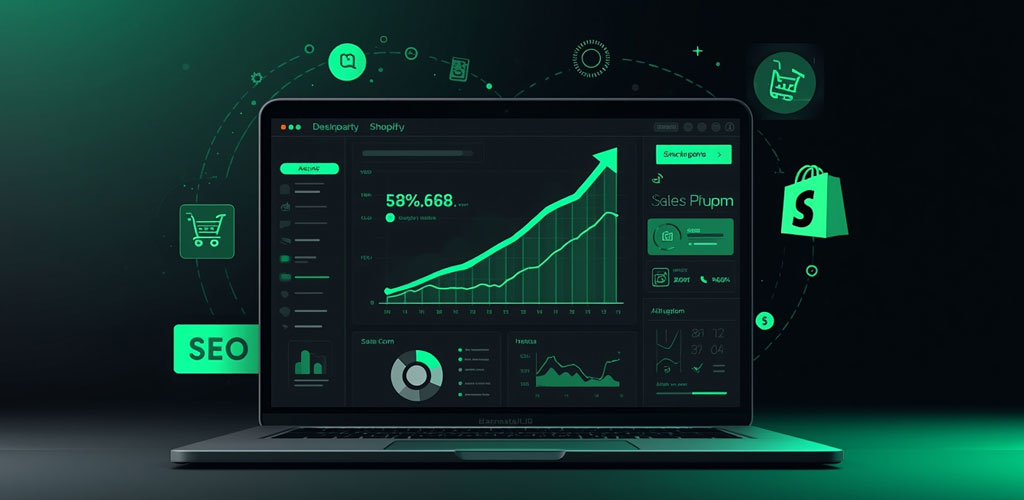Search Engine Optimization (SEO) has always been a constantly evolving discipline, shaped by changes in search engine algorithms, user behavior, and technology trends. But nothing has shaken the SEO world quite like the rise of generative AI. Tools like ChatGPT, Google Gemini, and other AI-powered systems have not only transformed how people search for information but also how search engines deliver results. For businesses, marketers, and content creators, this is a turning point that demands a rethinking of strategies.
In the generative AI era, search is no longer limited to a list of blue links. Instead, it’s moving toward rich, conversational answers, AI-generated summaries, and predictive suggestions that anticipate a user’s needs. This shift is exciting but also challenging because it disrupts the traditional SEO playbook. To stay ahead, it’s essential to understand how generative AI is influencing search and what that means for the future of optimization.
The Rise of AI-Generated Search Results
One of the most noticeable changes is the integration of AI-generated answers directly into search results. Platforms like Google have introduced AI Overviews, which provide users with detailed summaries before they even click a link. Similarly, Microsoft Bing uses GPT-powered responses to give immediate answers to questions.
This means users can often get the information they need without visiting a website. For SEO professionals, this is a double-edged sword. On one hand, AI summaries can highlight your content and establish authority. On the other hand, if your site’s visibility is reduced to just a small mention in an AI-generated box, your traffic may decline. The key is to create content that AI tools consider valuable enough to feature prominently.
Search is Becoming More Conversational
Generative AI has shifted search from keyword-based queries to natural, conversational interactions. Instead of typing “best smartphone under $500,” users might now ask, “Which phone should I buy if I want great photos and long battery life for under $500? These intricate, contextually rich inquiries can be interpreted and answered by AI.
For SEO, this means moving beyond rigid keyword targeting. Content must be written in a way that mirrors how people naturally ask questions. It’s not about stuffing keywords but about answering real, nuanced queries in a clear, helpful, and engaging manner. Long-form, in-depth content that addresses related subtopics and anticipates follow-up questions will perform better in this environment.
The Shift Toward Trust and Authority
In order to generate replies, generative AI models mostly rely on reliable and authoritative sources. This is pushing search engines to prioritize trust signals more than ever before. Expertise, author credibility, transparent sourcing, and strong brand presence are becoming non-negotiable elements of SEO.
If your content appears in AI-generated responses, it’s often because your website has built a reputation for reliability. This requires consistent publishing of accurate information, citing reputable
sources, and demonstrating subject matter expertise. Google’s E-E-A-T framework (Experience, Expertise, Authoritativeness, and Trustworthiness) is more relevant than ever in the AI era.
The Role of Structured Data and Context
Generative AI thrives on context. It doesn’t just look for keywords—it tries to understand the meaning behind the content. This is where structured data becomes crucial. By using schema markup, you help search engines and AI systems interpret the type of content you’re offering, whether it’s a product review, a how-to guide, a news article, or an FAQ.
Structured data can increase the chances of your content being featured in AI summaries, rich snippets, and voice search results. This is especially important for e-commerce businesses, local service providers, and publishers who want their information to be easily discoverable by AI systems.
Content Quality Over Quantity
In the past, SEO strategies often revolved around producing large volumes of content to cover as many keywords as possible. While that approach still has some value, generative AI rewards quality over sheer quantity. Well-researched, well-written, and highly relevant content has a much better chance of being surfaced by AI-powered search tools.
This doesn’t mean you should publish less—it means every piece of content should be crafted with a specific purpose and audience in mind. High-quality visuals, original research, interactive elements, and in-depth explanations are becoming more important as AI prioritizes comprehensive resources over thin, repetitive articles.
The Growing Importance of Multimedia Content
As AI-powered search becomes more sophisticated, it’s expanding beyond text to include videos, podcasts, and interactive media in its results. Search engines are increasingly capable of analyzing and understanding multimedia content, meaning video SEO, podcast optimization, and image search optimization will play a bigger role.
If your strategy is still entirely text-based, you might miss out on significant traffic opportunities. Incorporating videos with transcripts, well-optimized alt text for images, and engaging audio content can boost visibility in AI-driven search experiences.
SEO and AI-Generated Content: A Balanced Approach
With the accessibility of AI content creation tools, many businesses are tempted to produce vast amounts of AI-generated articles. While AI can help with brainstorming, drafting, and improving content, relying solely on machine-generated writing can backfire. Search engines are working to detect low-quality, auto-generated content, especially if it lacks originality or offers little value.
The most effective approach is to use AI as a supportive tool, not a replacement for human creativity. AI can help with research, outlining, and language refinement, but the final product should include human insight, unique perspectives, and emotional resonance. This ensures your content stands out in a sea of generic AI writing.
Preparing for the AI-First Search Future
The generative AI era is just beginning, and its full impact on SEO will continue to unfold in the coming years. What’s clear is that adaptability will be the most valuable skill for digital marketers and content creators. Search engines are experimenting with new ways to deliver AI-powered results, and user expectations are changing rapidly.
To stay ahead, businesses should focus on building genuine authority, creating in-depth and useful content, optimizing for conversational queries, and embracing a mix of text, video, and interactive media. SEO is no longer just about ranking—it’s about being part of the broader AI-driven information ecosystem.
In this new landscape, the websites that will thrive are the ones that see generative AI not as a threat but as an opportunity. By aligning with how AI understands, evaluates, and presents information, you can ensure your brand remains visible, relevant, and influential in the years to come.










